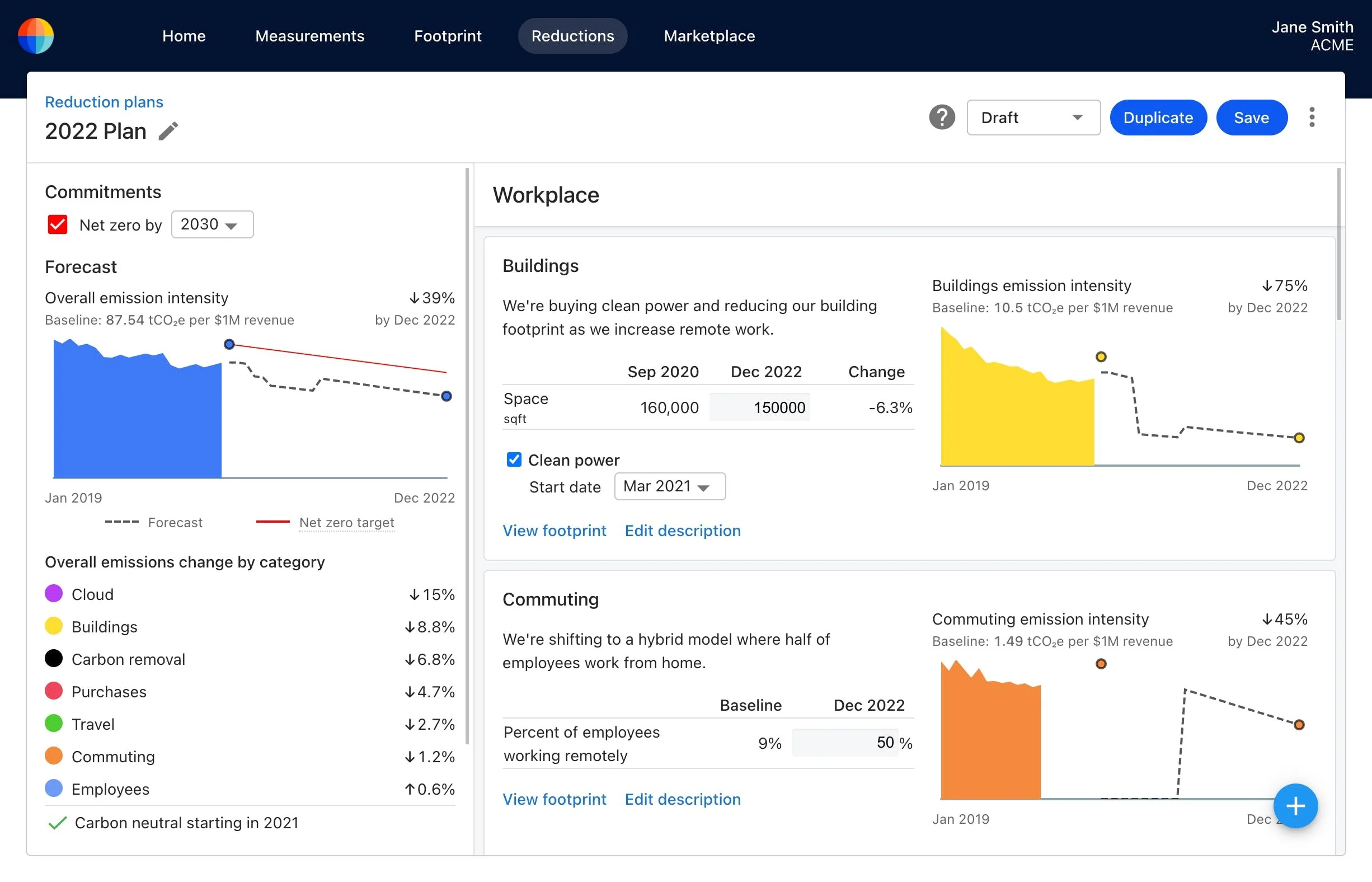Why the Business of Counting Carbon Needs More Time, Pt. 1
“Persefoni – Climate Management & Accounting Platform” Source: Persefoni.com
If you're interested in carbon accounting, carbon taxes, or carbon marketplaces, there's no doubt you've heard of Persefoni, a software-enabled climatech company that recently raised $100+ million for the first-of-its-kind CMAP. Persefoni, understood more simply as a SaaS-based carbon accounting platform, enables the planning, monitoring, analysis, reduction, and reporting of corporate carbon footprint. And if you're wondering whether this is a growing business opportunity or another VC-backed, flash in the pan, a quick scroll through their website features a parade of corporate logos from Bain & Company to SMBC and Vector Group, boasting an ever-growing list of private equity companies that can't sign up fast enough.
So, what's CMAP?
Although CMAP (Climate Management & Accounting Platform) or “Climate ERP” may be new terms, carbon accounting has existed long before Persefoni's founding last year in January 2020. In fact, several companies, including SaaS platforms Plan A and planetly in the EU, have founding dates as early as 2017, listing an impressive roster of climate experts, product features, and key sustainability partnerships, with new integrations on the horizon.
Watershed - Helping companies cut carbon. Source: Product Hunt
Yet, despite the growing number of carbon accounting and carbon management platforms in the marketplace, more continue to appear, claiming segments of the corporate landscape and doubling down on their niche offerings. In the last 5 years alone, 5 more notable CMAPs have formed, and with them a considerable term sheet with an average check size of nearly $7M.
In 2019, Emitwise was founded with the mission to "empowers businesses to automatically measure, report, and reduce their carbon footprint in real-time," Watershed was founded as a "software platform for running a world-class climate program. Start reducing your carbon footprint in weeks, not years." The next year, PathZero "made it easy for companies to disclose their carbon emissions and the actions being taken to address them," and shortly after in 2021, Pledge formed to "make it simple for businesses of every size to understand and manage the climate impact of their products."
You get the picture.
🌅 Beacon
With so many eyes vying for the same business model, you'd think new entries might be scared away. Not so.
Let's be very clear, I started down this CMAP path knowing full well that the industry was picking up steam, but I was determined to find a path forward and set out to talk to as many people in sustainability, carbon accounting, regulatory markets, and so forth. Like any other business opportunity, I weighed the Pros and Cons of throwing my hat into the ring. The project was named Beacon. And despite my decision to bench the project, I'm still a vocal advocate for the business.
Which Companies Are Responsible For the Most Carbon Emissions? Source: Visual Capitalist.
CMAP continues to command a growing space in my free thought. If you've read some of my past calls to climate action, you'll quickly realize that I advocate for individual climate advocacy as a groundswell for major climate action. In the past few years, after learning more about climate change and witnessing very real present-day impacts, I was determined to find my own path to create change.
I personally found an early interest in city planning and urban redevelopment as a driving force for climate mitigation at scale. Without a better strategy, I enlisted in the Climate Reality Project Leadership Corps and buried myself in policy, eventually joining a policy action squad with a group of local leaders to push for legislation to decarbonize existing building stock.
What I learned early on isn't that cities lack the resources to take significant climate action. In reality, cities need their citizens to lead them to the most pressing issues. It is impossible to tackle every major issue within urban centers, so the people need to vote not only with their ballots but also with their time. And for many activist groups, including my own, that meant collecting data and making a case for our policy.
Fast forward to early 2021, I began to realize that many of the leading climate technology companies were hyper-focused on individual sectors of industry, many requiring specialized science backgrounds where talent became the bottleneck. As I learned more about and applied to the companies that became the envy of the climate-conscious talent pool, I realized that they're still businesses, with board members, OKRs, and financial statements. Despite the greatest intentions, scale would have to happen from within the world's largest polluters — corporations and cities.
Beacon was and still is an exploration into driving climate action from within the world's largest emitting corporations and organizations by using data. And if we're to make any headway in the task of curbing climate change, our primary goal should be reduction, not repurpose.
Reduce, Reuse, Recycle
Many people seem to forget the first step in Reduce, Reuse, Recycle.
Brilliant minds seem determined to fix our climate crisis by sucking carbon out of the air, planting more trees to sequester carbon, or turning our emissions into essential products, despite the fact that any new venture results in high green premiums and requires significant funding and subsidies to get off the ground.
Why not just reduce?
Accounting, Reporting, Target Setting
The first step to an effective reduction strategy is accounting. Although this stage has historically been the beginning and end of many corporate sustainability projects, the growth of the cap and trade program, carbon offset markets, impending carbon taxes, and general corporate sustainability has pushed major industries from accounting and reporting to target setting.
While accounting and reporting answered the simple questions like:
Where are we spending the most carbon?
Target setting digs deeper into business ethics and operations with:
Where can we reduce our emissions?
Can we save any money in the process?
How can we improve our value chain and protect the planet?
In the world of carbon accounting, a typical business operation is divided into several key categories that define a corporate emissions profile. From functions like business travel (Scope 1) to building utilities (Scope 2) and even the perceived climate impact of your customers (Scope 3), leading governmental, non-profit, and scientific organizations have been working to standardize the impact of various GHG emissions to make calculation and emissions management a simpler task. The GHG Protocol, among many other global standards, established the foundation for many modern CMAP companies to create technologies that can compete with the incumbent — consulting.
You, too, can master value chain emissions. Source: Greenhouse Gas Protocol
Neither software nor consulting will wholly replace the other, nor should they. While software may offer a shortcut to calculating the more general picture of corporate emissions, consultants like AECOM or Carbon Trust (or a hybrid of the two) may be the only immediate route to verifiable GHG emissions accounting. Nonetheless, the rough data calculated by the growing suite of software tools encourage corporate climate action through simplicity by removing roadblocks and creating user-friendly software that helps corporations become responsible — or at the very least signal it.
Like any new climatech solution, CMAPs are a double-edged sword, something I've learned about in my conversations with academics that I'll get into next.



